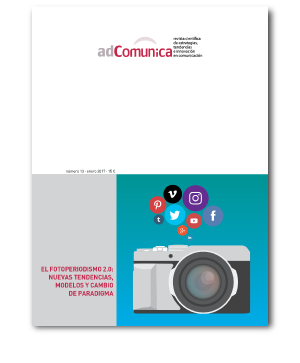Arqueología Transmedia: participación de las audiencias en la expansión de las narrativas de la Segunda Guerra Mundial (caso <em>Band of Brothers</em>)
Contenido principal del artículo
Resumen
Este documento pretende probar que es posible (y quizá necesario) abordar la investigación sobre lo transmedia en términos de una lógica que busque en las narrativas y relatos (del pasado y presente), aspectos trascendentes de los procesos de comunicación centrados en la participación. Se propone mover el interés de investigación desde el qué (es transmedia) hacia el cuándo (es transmedia), para demostrar que la transmedialidad en los relatos no depende únicamente de su construcción narrativa, sino de toda una organización de elementos y recursos que constituyen un conjunto de funciones que se adquieren a partir de su significación, apropiación y expansión. En este artículo se trabaja una triple articulación de lo transmedial: 1) la dimensión histórica, 2) la dimensión narrativa y 3) la relación entre la recepción y la participación, para lo que se describe y analiza la expansión ficcional y no ficcional de historias de la Segunda Guerra Mundial (tomando como ejemplo el caso de Band of Brothers). Se trabaja, desde una perspectiva crítica, la idea y posibilidad de una Arqueología Transmedia que permita expandir los límites (y usos) del concepto Transmedia Storytelling, más allá de los casos emblemáticos de la cultura popular audiovisual actual. Bajo la premisa de que la recepción nunca ha sido completamente pasiva por parte de las audiencias, se plantea la posibilidad de un tipo de recepción-participación orientada a la creación de contenidos generados por los usuarios, que se hacen visibles en universos narrativos transmediales del pasado y que pueden ser ficcionales o no.
Descargas
Detalles del artículo
1. Política propuesta para Revistas que ofrecen Acceso Abierto
Los autores que publican en esta revista están de acuerdo con los siguientes términos:
- Los autores conservan los derechos de autor y garantizan a la revista el derecho de ser la primera publicación del trabajo al igual que licenciado bajo la licencia CC BY-SA, que permite a otros compartir el trabajo con un reconocimiento de la autoría del trabajo y la publicación inicial en esta revista.
- Los autores pueden establecer por separado acuerdos adicionales para la distribución no exclusiva de la versión de la obra publicada en la revista (por ejemplo, situarlo en un repositorio institucional o publicarlo en un libro), con un reconocimiento de su publicación inicial en esta revista.


